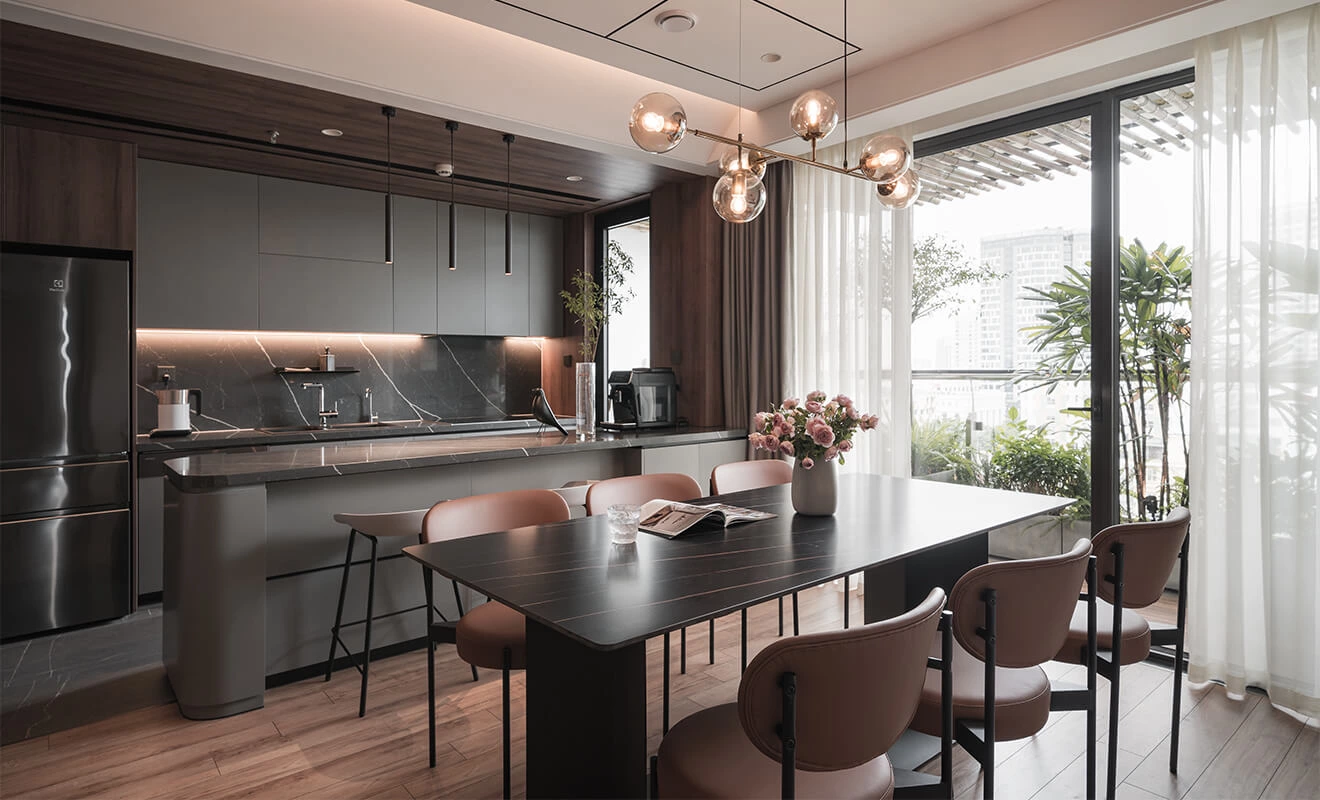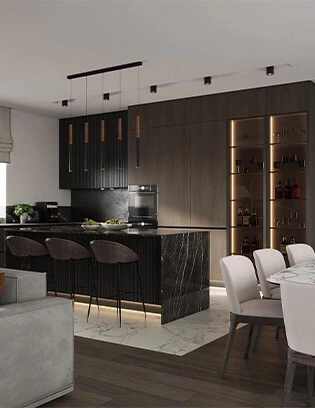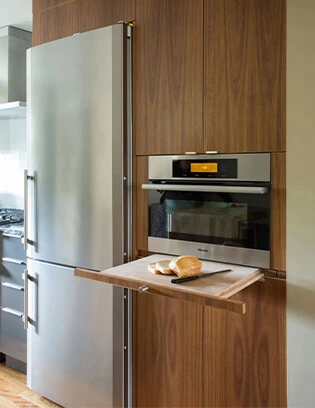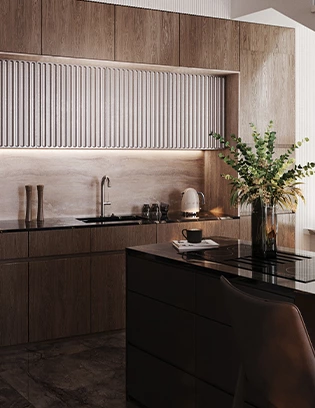5 Design Tips for Minimalist Kitchen Interior
The minimalist kitchen interior offers a sense of relaxation, free from visual distractions, daily chaos, and the excess consumption. Even if you don’t cook often, the kitchen remains one of the most frequently visited spaces in a home. A minimalist kitchen is a well-thought-out space, where there’s nothing random. Here are 5 simple tips to help you create a minimalist space that’s functional, aesthetically pleasing, and perfect for relaxation and socializing.
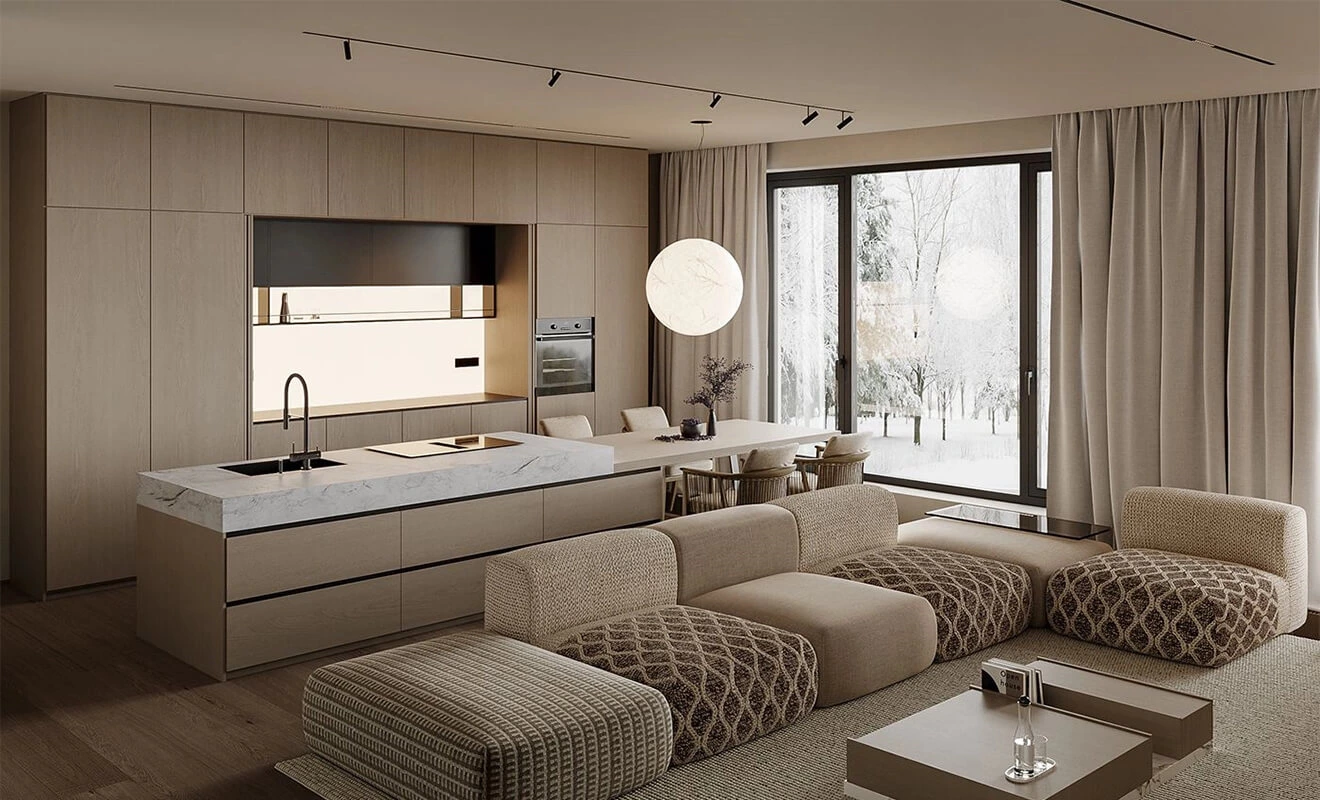
1. Basic Design Principles
Minimalist interiors feature simple shapes, clean lines, and neutral colors. The focus is on maximizing functionality and simplicity while ditching unnecessary decorative elements. The minimalist style emphasizes space, light, and materials, often highlighting textures. This creates a clean, serene atmosphere in the home, but it’s also a philosophy—a lifestyle that values quality over quantity, aiming to create a harmonious, balanced environment.
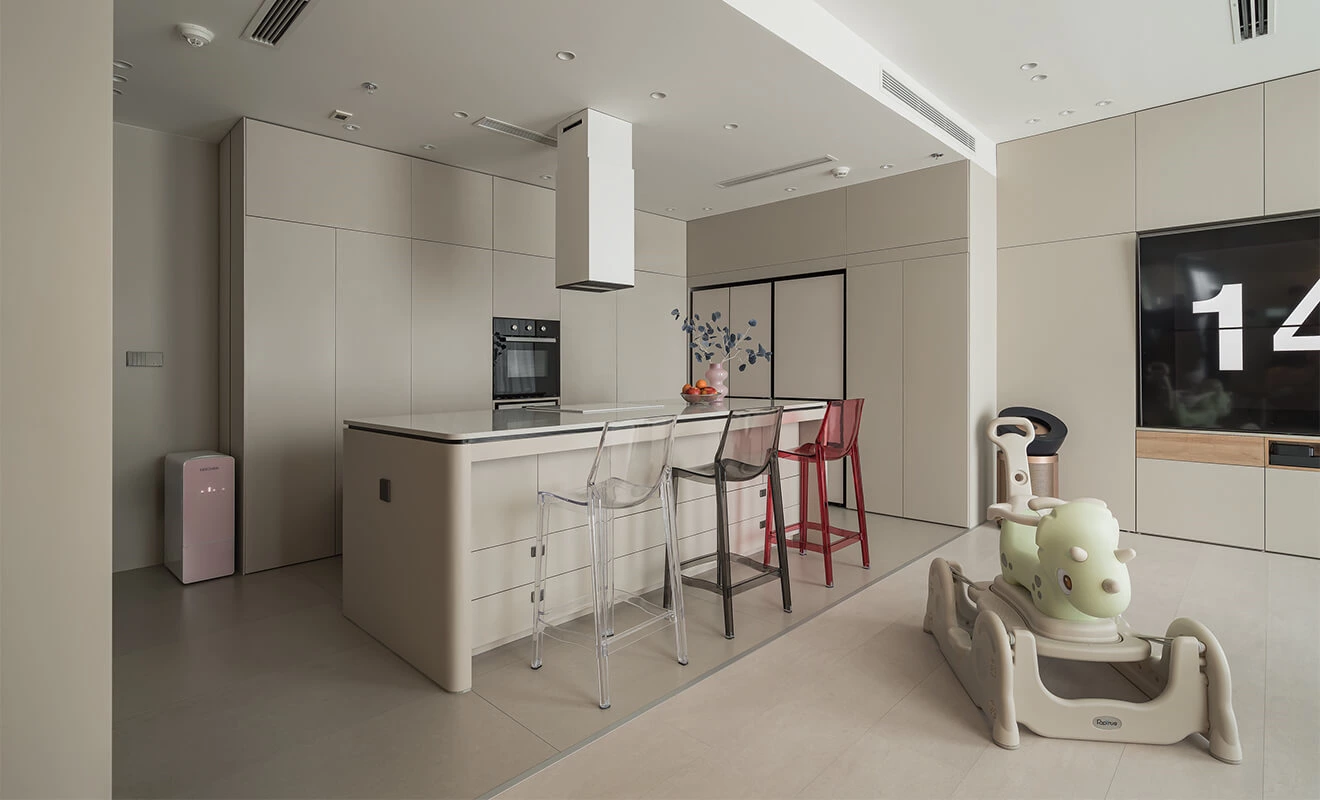
Simplicity and Functionality: A minimalist kitchen is all about clean lines and a monochrome color palette. The design is intended to foster a calm, uncluttered atmosphere where every item has its place. But it's also about making the most of space through modern technology, with kitchen furniture and built-in appliances being thoughtful and compact for maximum convenience and efficiency.
Minimal Decor: Replace heavy decorations with textured materials that stand out as part of the kitchen’s aesthetic. Clear, uncluttered surfaces create a sense of order and spaciousness, focusing attention on functionality while maintaining visual appeal.
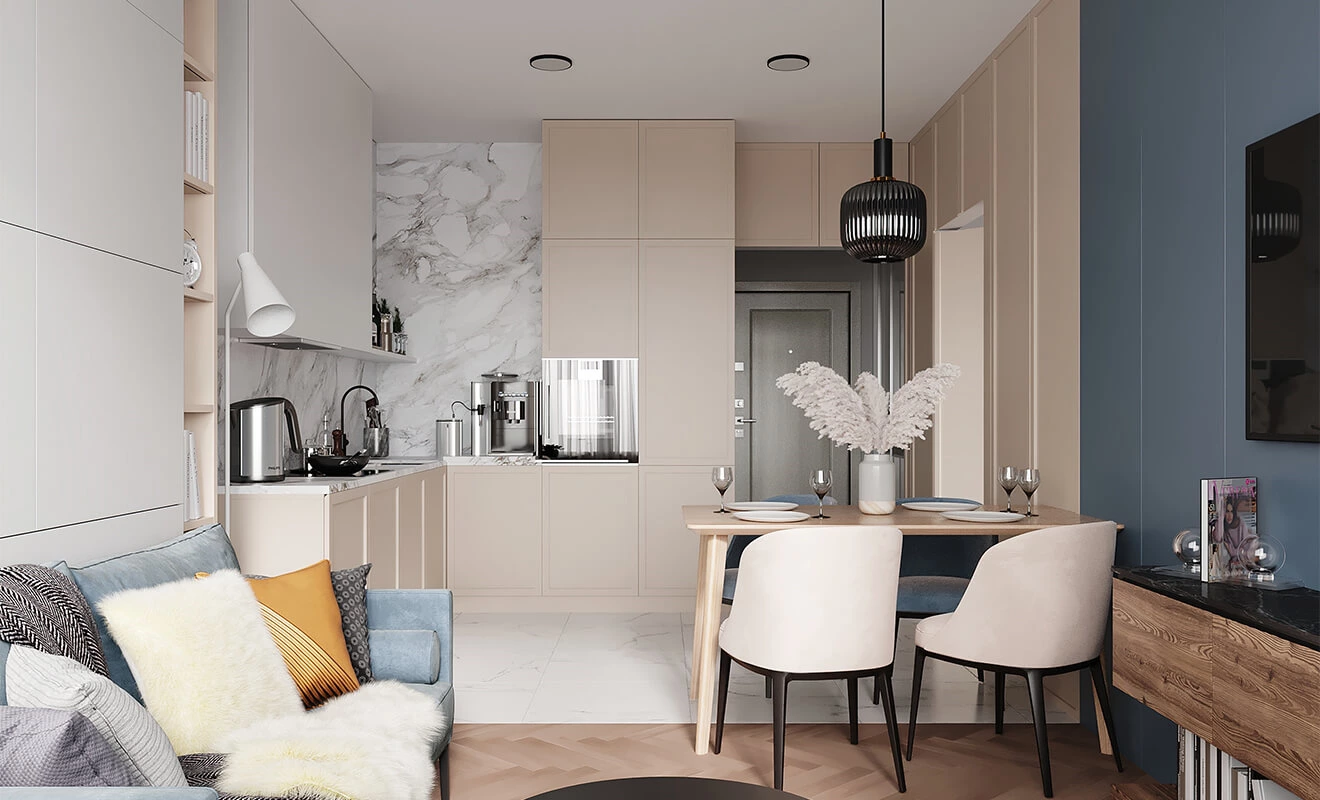
Simple Lines and Geometric Shapes: The minimalist kitchen features simple lines and beautifully designed furniture. Clear outlines and well-defined contours create an ideal sense of order. For example, cabinets and shelves often have smooth fronts without handles, which enhances the effect.
Neutral Color Palette: Neutral shades like white, grey, black, and beige create a clean, bright space, offering a sense of airiness and openness. Lighter tones tend to make the background feel more dominant, allowing you to focus on the texture of the materials.
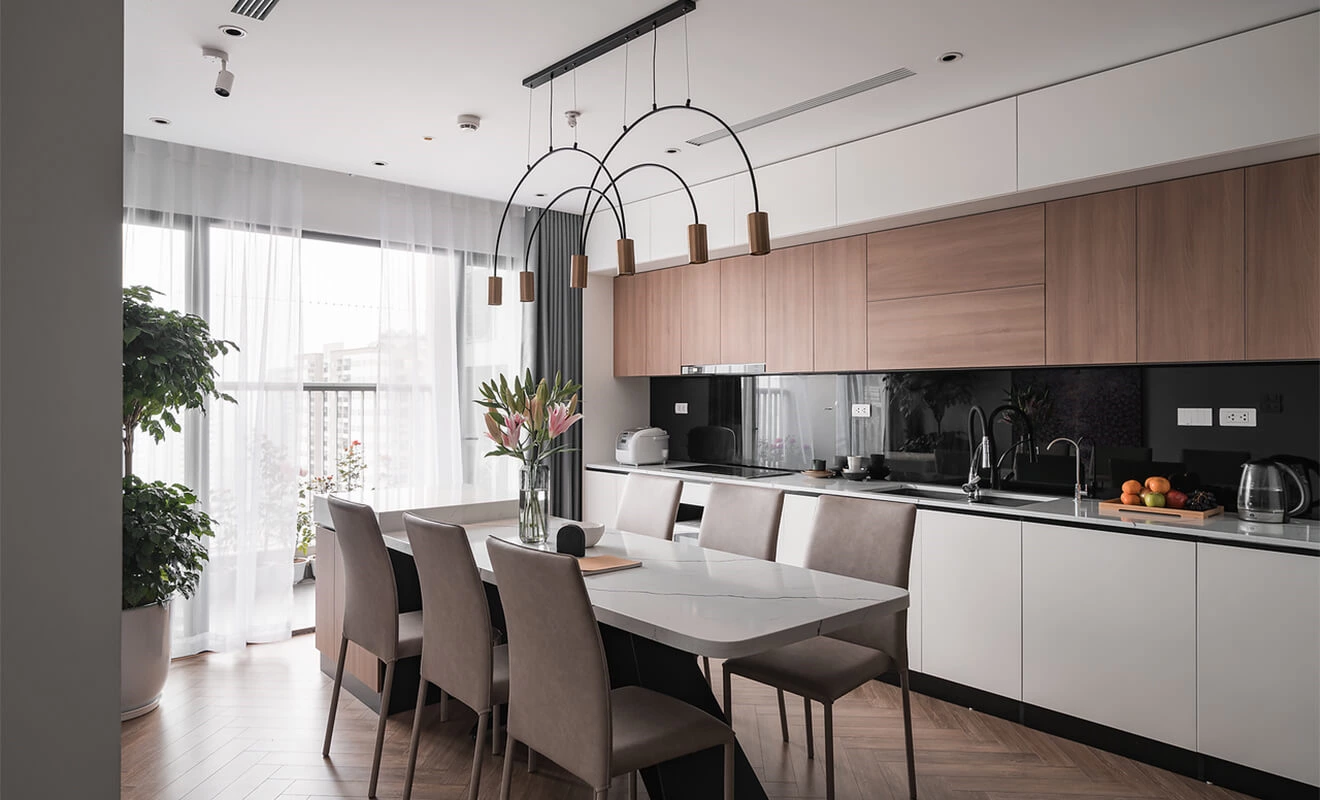
Use of Natural Materials: It’s hard to imagine a minimalist kitchen without natural materials. Wood, stone (natural or engineered), glass, and metal all contribute to a natural feel. Wood is typically used in furniture and decor, while stone and metal are often found in countertops and accents. Natural materials not only emphasize minimalist aesthetics but also contribute to creating an eco-friendly and healthy environment.
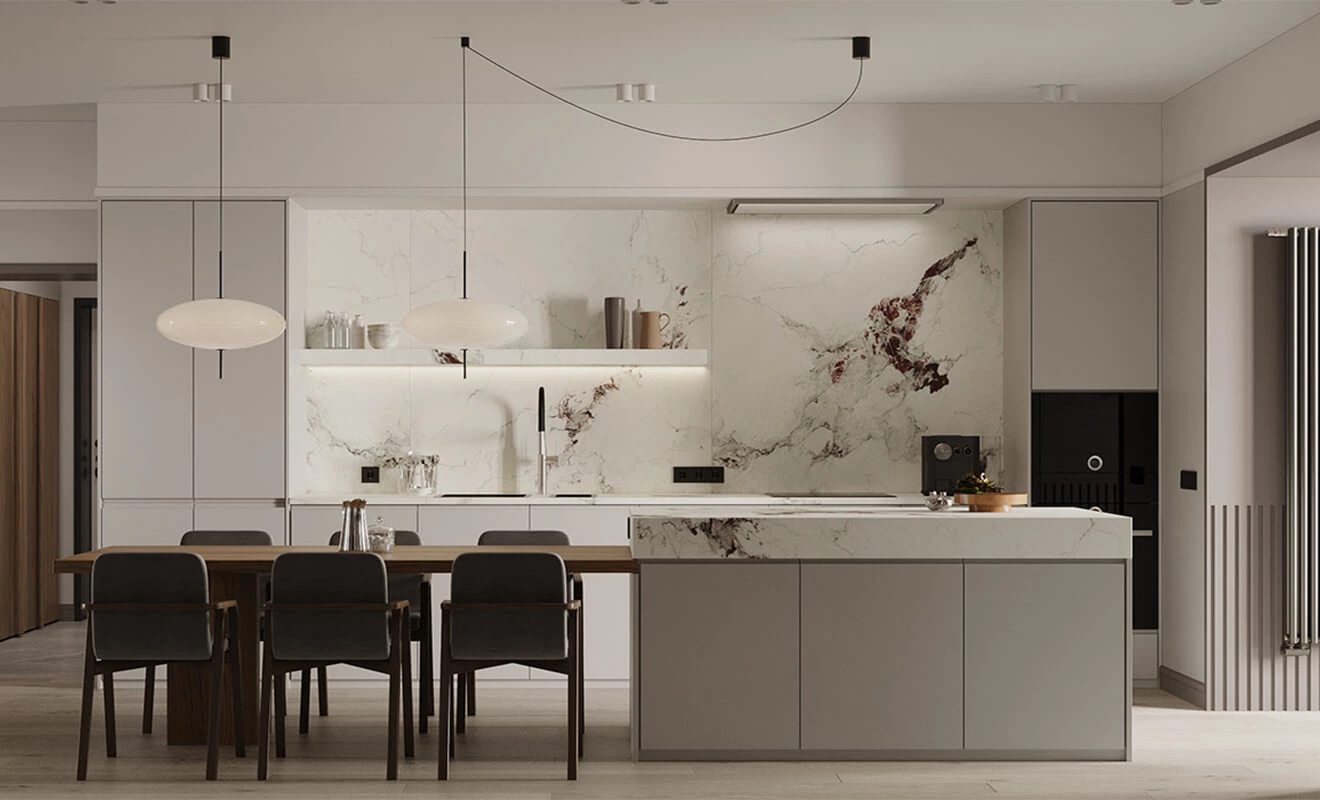
2. Minimalist Kitchen Layout
The layout of a minimalist kitchen should maximize the use of available space. This includes placing kitchen equipment efficiently and avoiding visual clutter. If space is limited, consider multifunctional furniture. A windowsill can serve as a bar, or you can use retractable countertops, foldable tables, and chairs. A minimalist kitchen with an integrated living space also visually enhances the room’s sense of space. Built-in appliances in minimalist kitchens are usually hidden behind a series of uniform fronts to avoid visual clutter.
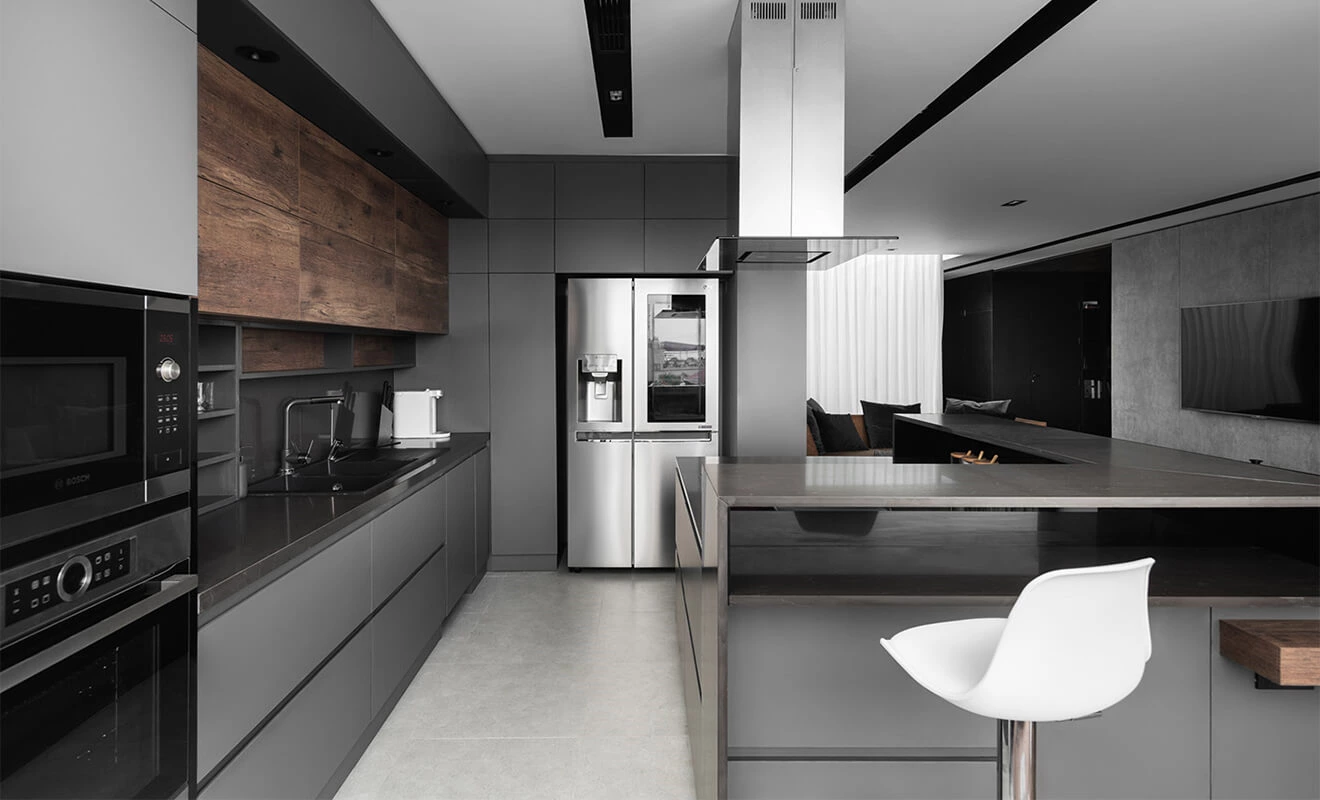
Optimized Use of Space: Kitchens can quickly become cluttered with gadgets and appliances. Assess which appliances you don’t use, and consider ditching some like bread makers, yogurt makers, and grills. Focus on organizing frequently used items for easier access, ensuring a physically and visually cleaner kitchen.
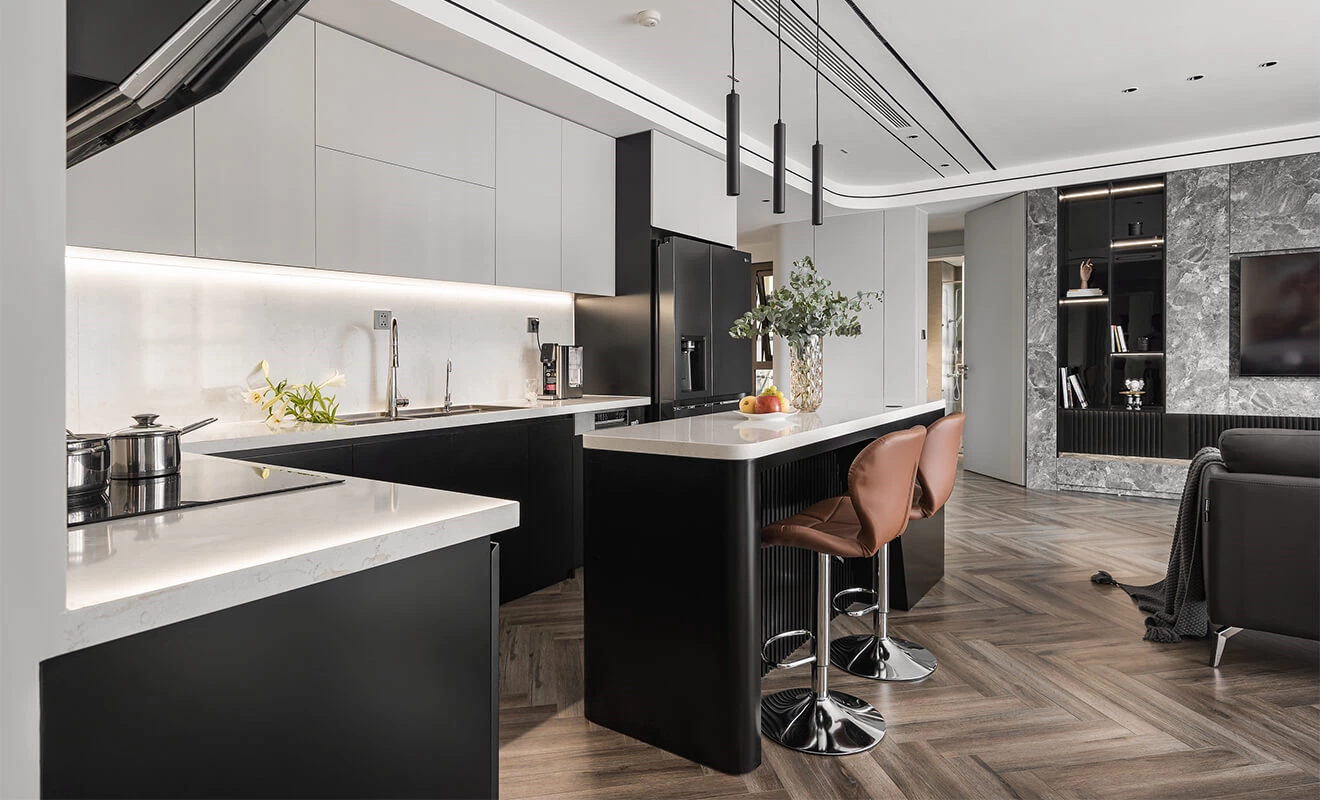
Convenience and Functionality in Work Areas: Keep countertops and open surfaces clear of random items. Assign a dedicated spot for every utensil and appliance to maintain a tidy look. Invest in smart storage, like pull-out systems or hanging spice racks. Design around the work triangle of stove, sink, and fridge for efficient movement. Countertops and work surfaces should be at a comfortable height to avoid awkward bending or stooping. Cabinets and drawers should be designed to make frequently used items easy to access.
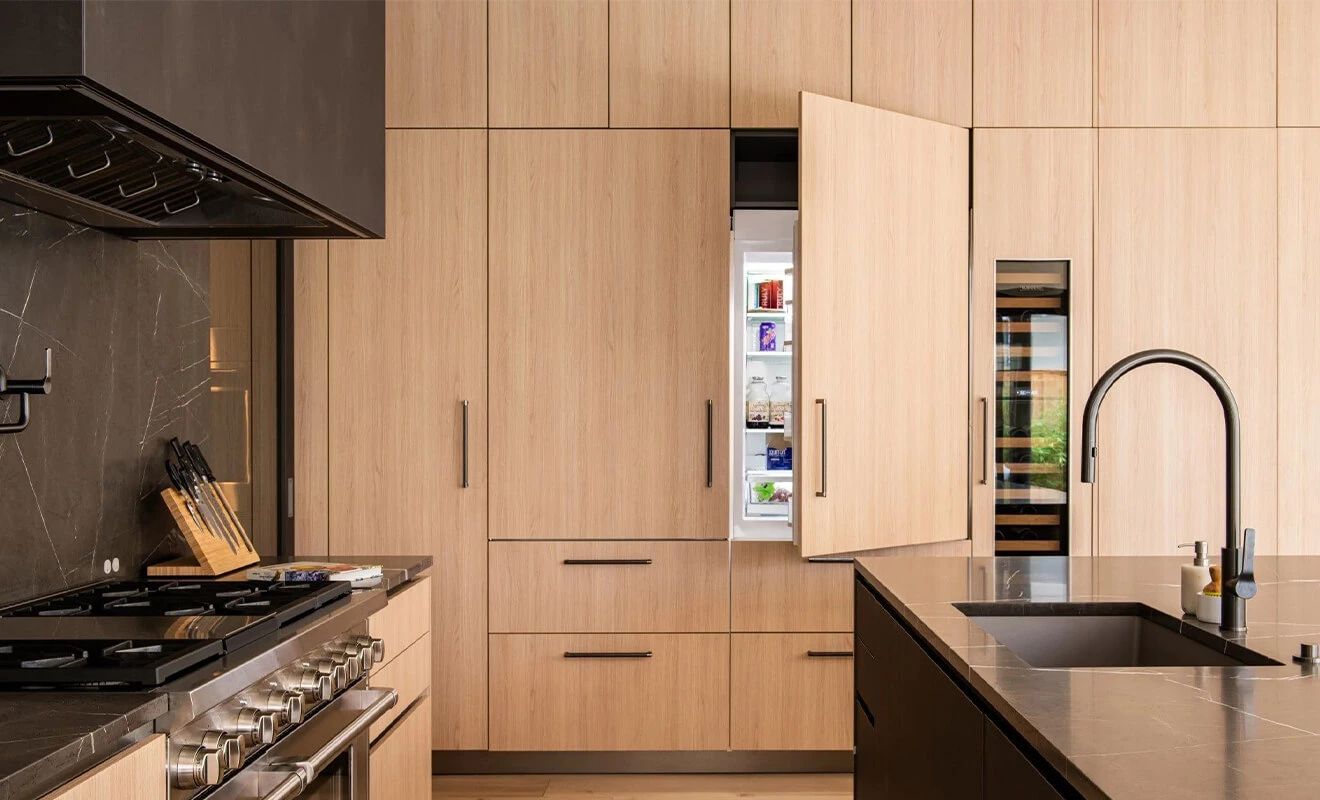
Hidden Storage Systems: To maximize storage, consider mounting upper cabinets closer to the ceiling to use wall height effectively. Use drawers, rotating trays in corner cabinets, and other innovative storage systems to make the most of every inch of space while allowing easy access. It's also important to have organizers for bowls, dishes, and utensils to avoid confusion and wasted time when searching for items.
3. Color Solution
The minimalist kitchen interior typically includes shades of white, black, grey, and beige. These create a clean, calm background, usually in lighter tones, emphasizing simplicity and order. A monochromatic palette, using varying shades of the same color, creates a harmonious and subtle look. For example, different shades of grey can add depth to the space. You can use contrasting colors to create accent tones, which adds visual interest without disrupting the overall minimalist style.
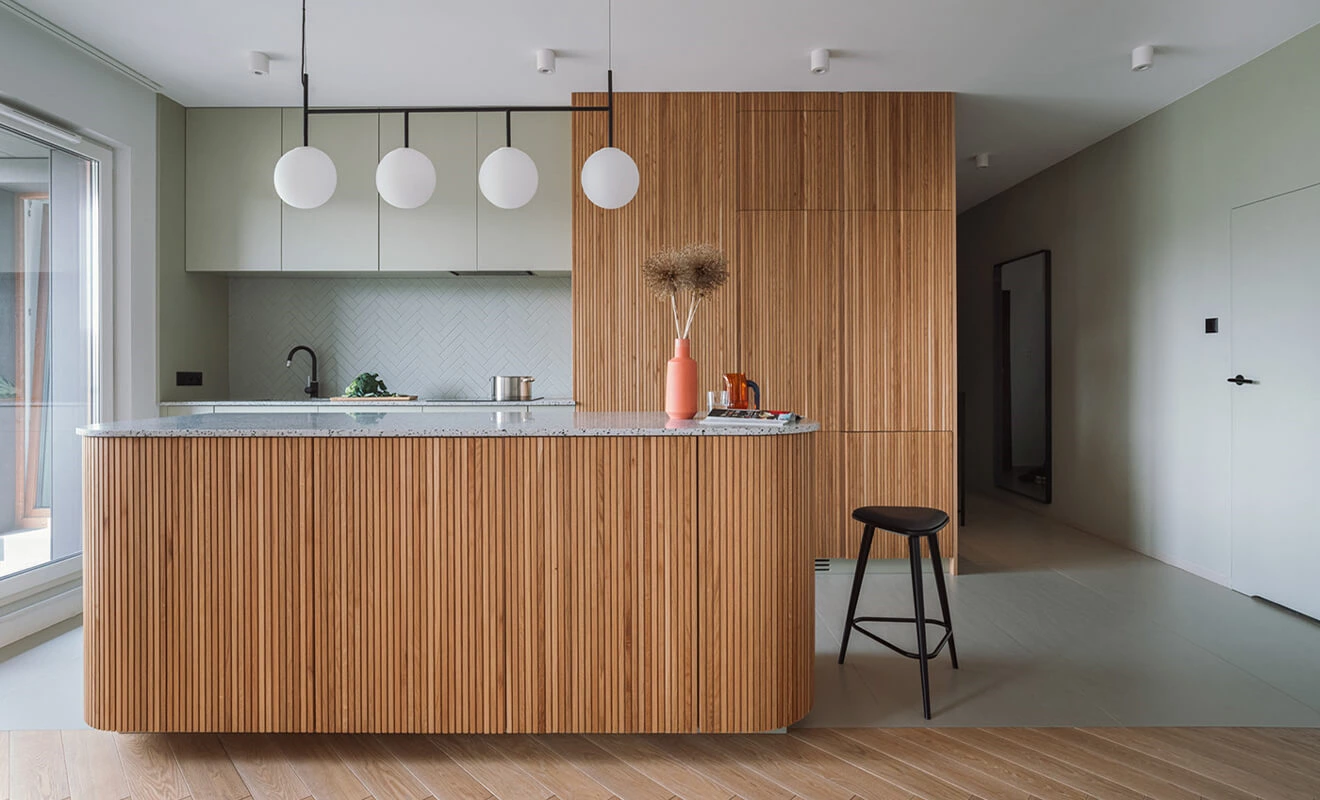
Minimalist kitchens can be built on either warm or cool tones. Warm hues (like sand and cream) create a cozy atmosphere, while cool tones (such as silver and blue) give a fresh, modern appearance. To maintain minimalism in kitchen design, it's important to limit the number of colors used to avoid overcrowding. Typically, two or three base colors are enough for a balanced, clean look. Choose neutral-colored kitchenware, cookware, accessories, and other decorative items instead of using multicolored items.
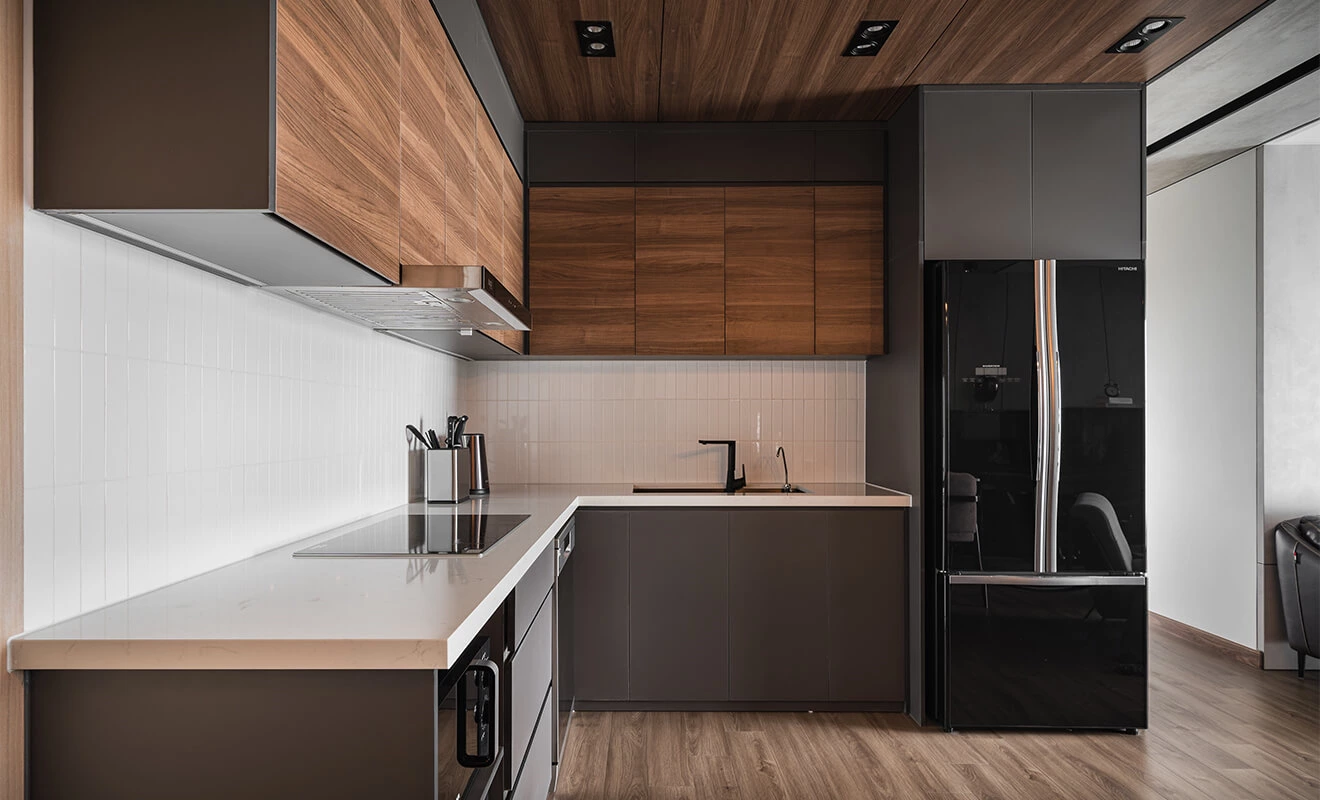
4. Furnishing and Accessories
Minimalist furniture features clean, geometric lines with little to no decorative detail.
Streamlined Designs: Cabinets with flat, handle-less fronts or push-to-open systems keep the look sleek and uncluttered.
Functional and Durable: Invest in high-quality materials that combine functionality and longevity. Avoid overcrowding the space with accessories; instead, choose essential and harmonious elements like a stylish vase, a cutting board, or simple kitchen linens.
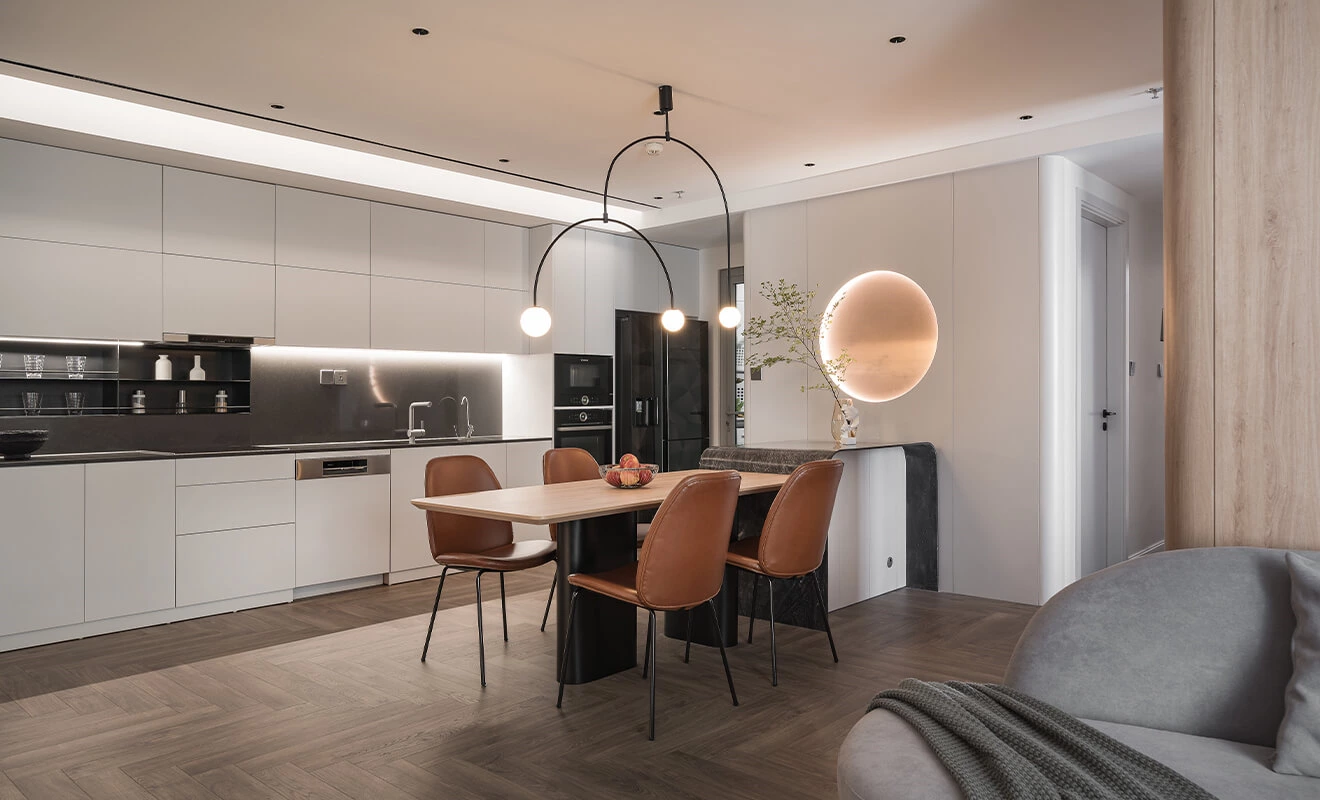
5. Minimalist Lighting
Natural Light: Maximize natural light by using large windows or glass doors. This creates an open and fresh feel, perfect for minimalist aesthetics.
Even Illumination: Install evenly spaced spotlights to ensure uniform lighting throughout the room.
Task Lighting: Use LED strips under cabinets to illuminate countertops for cooking tasks. This reduces shadows and enhances functionality.
Minimalist Fixtures: Choose simple, geometric light fixtures in neutral colors to seamlessly blend with the overall design.
